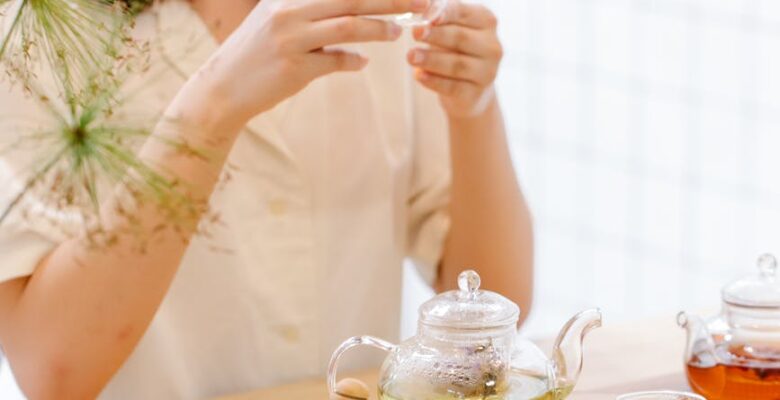We have a list of teas Korean folks drink with their snacks or desserts.
This post contains referral links for products we love. Staying Fit With Aeran earns a small commission on these links at no cost to you, and the links will always be marked with an asterisk *.
JUJUBE * TEA (DAECHU-CHA)
Jujube is a popular ingredient in Korean cooking. The fruits can be brewed into Daechu-cha in addition to being turned into sweet jujube syrup.
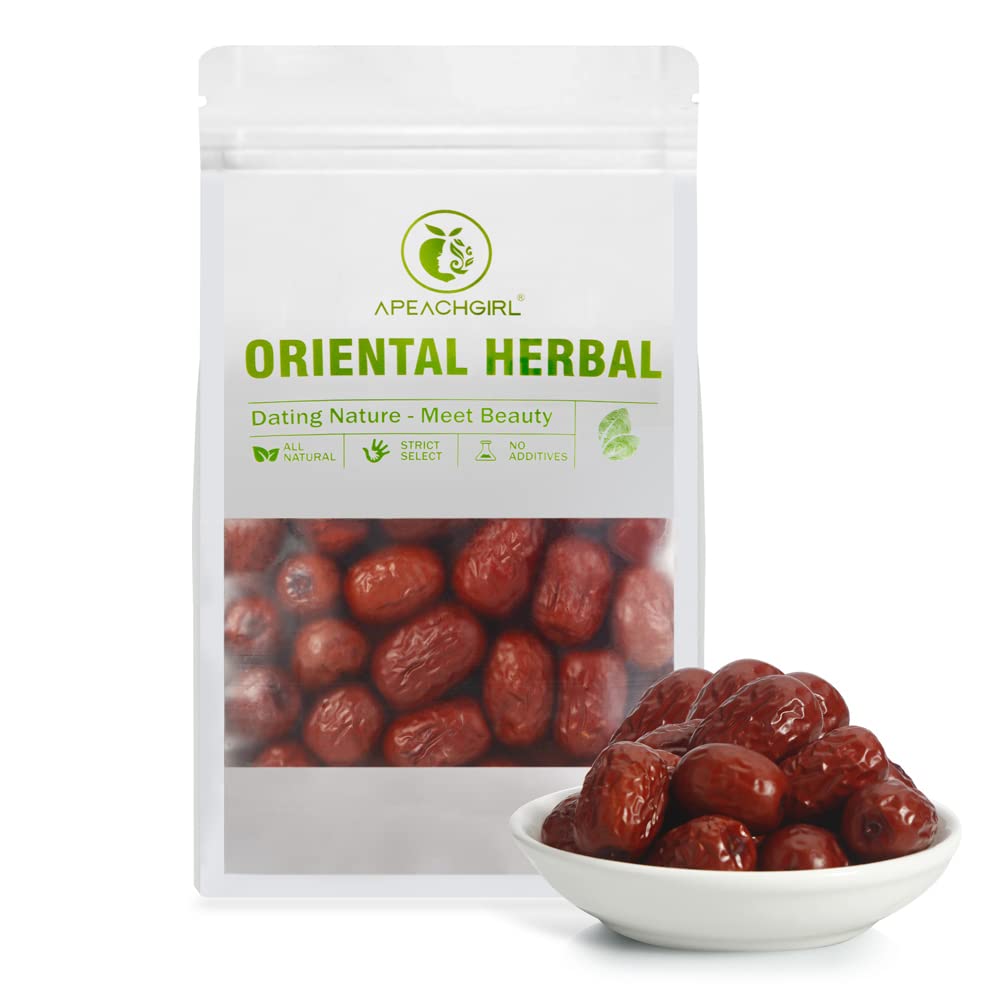
- HOW IT’S MAKE – Jujube dates are gathered and dried. To create tea, simmer the jujube dates in water until they are soft. Then, you mash them and fry them again. Optionally, strain it to remove any remaining skin.
- HOW TO ENJOY – Combine two spoonfuls of jujube concentrate with hot water. Finish with a sprinkle of pine nuts.
- CAFFEINE – ZERO.
- TASTE – Jujube tea has a naturally sweet flavor with undertones of berry flavor but nearly no sour flavor. You can add honey to taste.
- HEALTH BENEFITS – Due to their alleged capacity to prevent fungal and bacterial infections, jujubes are frequently utilized in Korean herbal therapy.
PLUM TEA ( MAESIL * CHA)
Maesil-cha is a tea produced by combining water and Maesil Cheong (Green Plum syrup), sometimes known in English as Japanese apricots or Chinese plums and scientifically known as Prunus Mume.
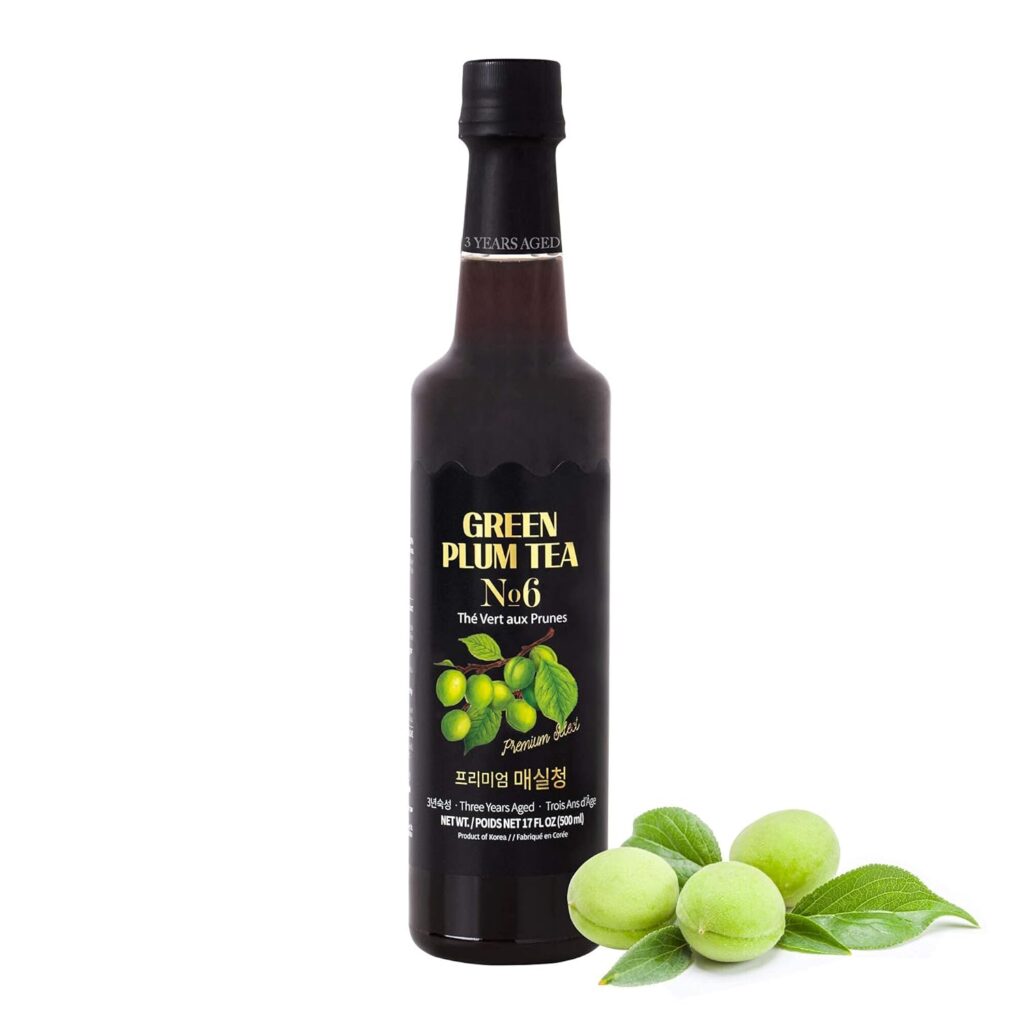
- HOW IT’S MADE – The plums/apricots are collected when they are unripe, from late May to mid-June. They are then placed in a jar with sugar for 100 days until all of the juice from the fruit has been sucked out and mixed with the sugar.
- HOW TO HAVE FUN – Maesil Cha is made by combining maesil cheong with hot or cold water. The amount of syrup you use depends on how strong you want the flavors to be.
- CAFFEINE – ZERO.
- TASTE – Maesil Cheong is tangy and sweet on its own. A spoonful of maesil cheong is not as sweet as honey or syrup, but it has the perfect combination of acidity and sweetness. When blended with water, it produces a delicious tea, but it also lends a delicious flavor to dressings and sauces.
Plum juice is supposed to satisfy thirst more effectively than water and to improve digestion.
FIVE-FLAVOR BERRY TEA (OMIJA * CHA)
Omija – dried Five Flavor Berries
Omija-cha is a common Korean tea prepared from the fruits of the Schisandra chinensis. The fruits of this plant are also known as five-flavor-berries because they are supposed to possess all five basic flavors: sweet, sour, salty, spicy, and bitter. I really adore the red hue of this tea, which is frequently used for food coloring in Korean cuisine.

- HOW IT’S MADE – Ripe five-flavor berries are collected in the fall and dried in the sun to preserve the taste. After the moisture has been removed completely, the berries are wrapped in paper bags and stored in well-ventilated places.
- HOW TO ENJOY – Omija-cha is created by steeping dried five-flavor berries in water and allowing them to decoct into a tea over time. Depending on your preferences, honey, and sugar can be used to sweeten the flavors somewhat.
- CAFFEINE – ZERO.
- TASTE – The acidity of this berry is the most pronounced flavor to me, and it pairs nicely with sweet honey or sugar. The distinct flavor of the berries provides the tea with a wonderfully refreshing taste when consumed, so I hope you try it!
In Korean folk medicine, five-flavor berries are considered to be beneficial to respiratory health and to reduce tickly coughs.
CITRON TEA (YUJA CHA *)
Yuja-cha, like maesil-cha, is produced from Yuja-Cheong (citron syrup). It is a common Korean tea that is consumed throughout the day. In the United States, Yuja is more often known as Yuzu. Yuzu trees can now be purchased from nurseries.
The fruit has little flesh and is too sour to be eaten on its own, but it has a strong aroma and is used to make (syrup).
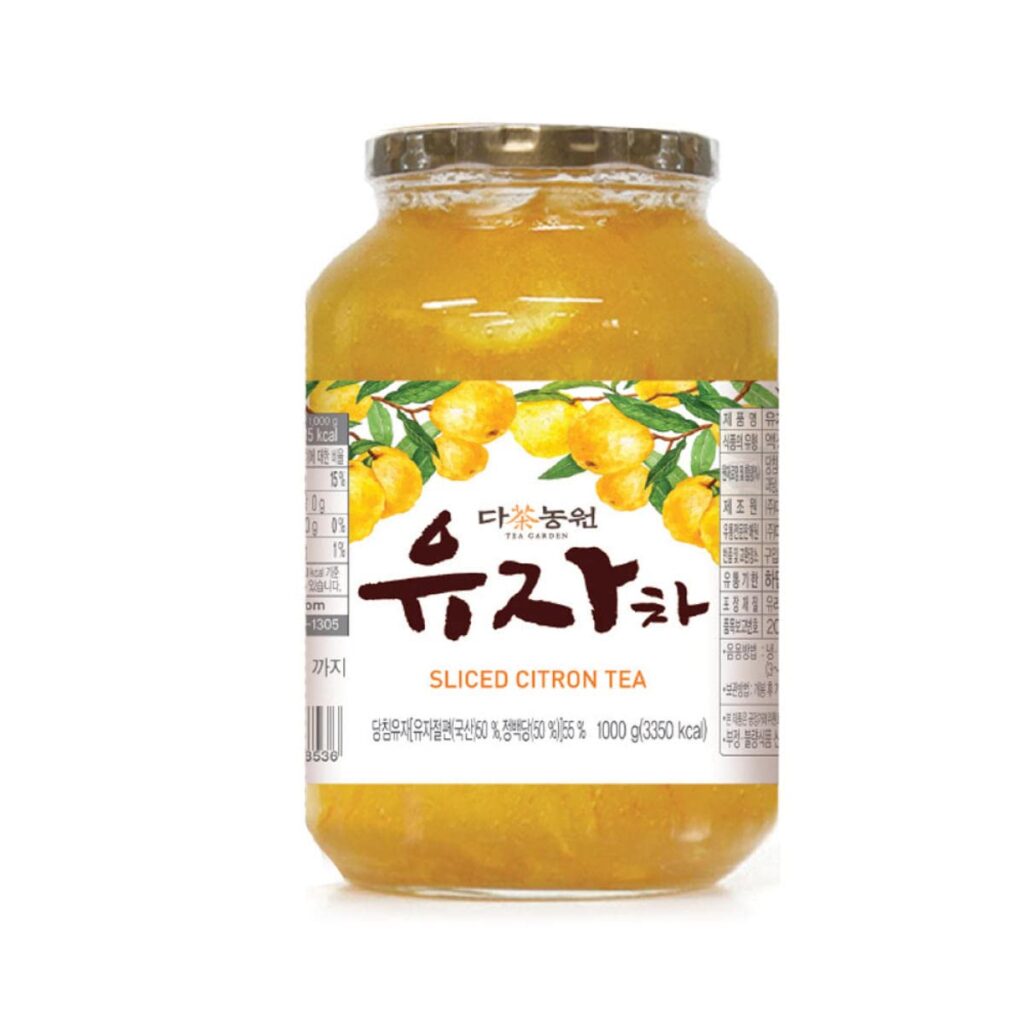
- HOW IT’S MADE – Yuzu fruits are available all year. Ripe fruits are plucked, finely sliced, and stored in sugar. The sugared Yuzu is then kept for 2-3 weeks before being transformed into delectable yuja-cheong.
- HOW TO ENJOY – Yuja-cha is made by combining yuja-cheong with hot or cold water.
- CAFFEINE – ZERO.
- TASTE – Because the yuja is soaked in sugar, the tea will be pleasantly sweet with citrus undertones. It’s a delightful drink, whether served hot or cold, and it’s undoubtedly one of my favorites!
Yuja cha is claimed to help with colds and sore throats due to its high vitamin C concentration (greater than lemons!).
BUCKWHEAT * TEA (MAEMIL CHA)
Buckwheat, often known as Maemil, is a prominent ingredient in ordinary Korean teas.

- HOW IT’S MADE – Before being toasted, buckwheat grains are peeled. They are then grilled in a large pan. Workers toss and mix the buckwheat to ensure that each grain is roasted evenly, similar to how stir-fry is made. After that, the dried buckwheat is ready to be utilized as a tea ingredient!
- HOW TO ENJOY – Memil-cha is created with a buckwheat-to-water ratio of 1:10. You can drink it hot or cold.
- CAFFEINE – ZERO.
- TASTE – Memil-cha has a toasted and nutty flavor that is easy on the throat and quenches thirst quickly.
Buckwheat is a diuretic and has been shown to improve liver function.
ADLAY MILLET * TEA (YULMU-CHA)
Yulmu-Cha is prepared from Yulmu, also known as Coix Lacryma-jobi, Job’s tears, Adlay, or Adlay millet. The hard shells of wild Adlay are used to make beads, whilst the cultivated varieties are softer and utilized as a medicinal herb throughout Asia.
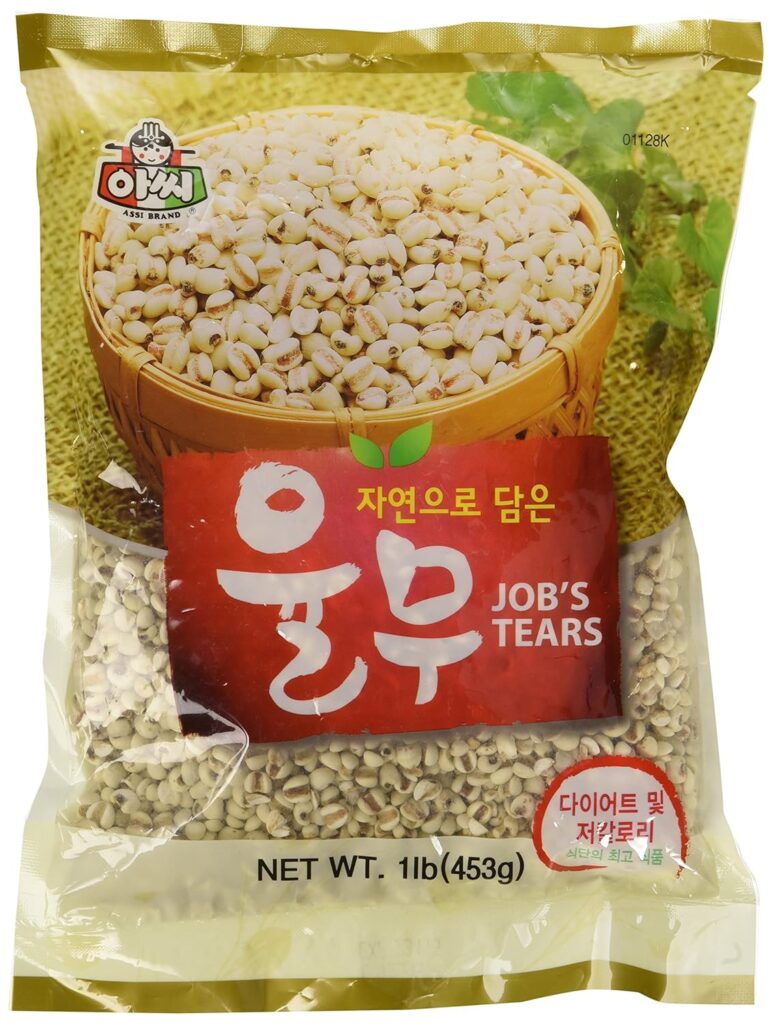
- HOW IT’S MADE – Matured Adlay plants are plucked, peeled, and sun-dried during September and October. Then, it is toasted until it turns yellow. Before it is ready to be processed into tea, it is usually ground into powder. Tea is sometimes created only from roasted pellets, similar to brown rice tea.
- HOW TO ENJOY – The tea will most likely be in powder form, with added sugar and grains such as barley and rice. Simply combine a couple of spoonfuls with warm water. It will result in a creamy drink. The other type of tea is made by just boiling the toasted yulmu to make a clearer tea.
- CAFFEINE – ZERO.
- TASTE – Adlay tea has a flavor similar to toasted brown rice tea.
Yulmu-cha is high in fiber and filling, making it ideal for diets if not overly sweetened.
RED GINSENG * TEA OR GINSENG TEA (INSAM CHA)
Insam, also known as Ginseng root, is a traditional herbal medicine in Asian cultures and a popular health supplement that is supposed to extend one’s life. The first manuscripts addressing ginseng’s supposed advantages were written in 196 AD. Historically, the plant has been utilized as a rehabilitation tonic for chronically ill individuals.
Hongsam are red-colored ginseng roots that have been cooked and processed. As a result, it is known as red (hong) ginseng. This approach is mostly utilized in Korea and is only applicable to ginseng that is more than 6 years old!
Both types of ginseng are used to make tea.
- HOW IT’S MADE – Dried ginseng roots are commonly utilized in traditional homemade Insam Cha. It’s cooked in water with jujube dates, then served hot or cold with honey to mitigate the bitterness. The tea solution described above is powdered or reduced to generate a concentrated syrup for commercial Insam chan. You can also use fresh ginseng (called Susam) instead, which will produce a milder ginseng tea.

Red ginseng, on the other hand, is produced by boiling and drying ginseng. Hongsam is substantially more expensive since it must go through several procedures before it is finished. It is also stated that Red Ginseng has fewer negative effects but is more powerful in its healing abilities. Hongsam is frequently marketed as a concentrated liquid that can be diluted in water.
- HOW TO HAVE FUN – There are numerous methods to consume insam-cha or hongsam cha. The first method involves cooking dried or fresh ginseng slices in water until the water turns a lovely golden hue. The second approach uses powdered ginseng, which you add to hot water and swirl before drinking. Finally, create tea by combining the concentrated ginseng essence with hot or cold water.
- CAFFEINE – Ginseng (Panax Ginseng) has natural stimulants that mimic the effects of coffee.
- TASTE – Because of the ginseng, insam-cha tastes earthy and bitter. To counteract the bitterness, honey or sugar can be added to dilute it.
Although ancient medicinal records indicate that ginseng is useful in strengthening various sections of the body, these claims have yet to be scientifically proven.
GINGER TEA( SAENG-GANG CHA)
Ginger tea is popular not only in Korea but all across the world, including the United States. Koreans, on the other hand, adore saeng-gang-cha for its flavor and effects.
- HOW IT’S MADE – To create Korean ginger tea, peel and slice fresh ginger, then store it in a jar with sugar or honey for 3-4 days. Daechu SaengGang Cha can be made with or without Jujube dates. The tea is then ready to be made.
- HOW TO ENJOY – Thinly slice the ginger and pour it in hot water.
- CAFFEINE – ZERO.
- TASTE – Saeng-gang-cha is spicy and fills your tongue and stomach with heat. It has a distinct and robust flavor that may be too overpowering for some (like me), but others enjoy it. To mask the taste, a little honey or sugar might be added.
- HEALTH BENEFITS – People say that ginger tea can help with stomach troubles since it warms your stomach, hence providing pain relief. When I’m having a bad case of diarrhea, I know it really helps my bowels settle down.
SOLOMON’S SEAL ROOT TEA * (DOONGLLAE CHA)
Polygonatum, commonly known as Solomon’s Seal Root, is a medicinal herb as well as a popular Korean tea throughout the year.
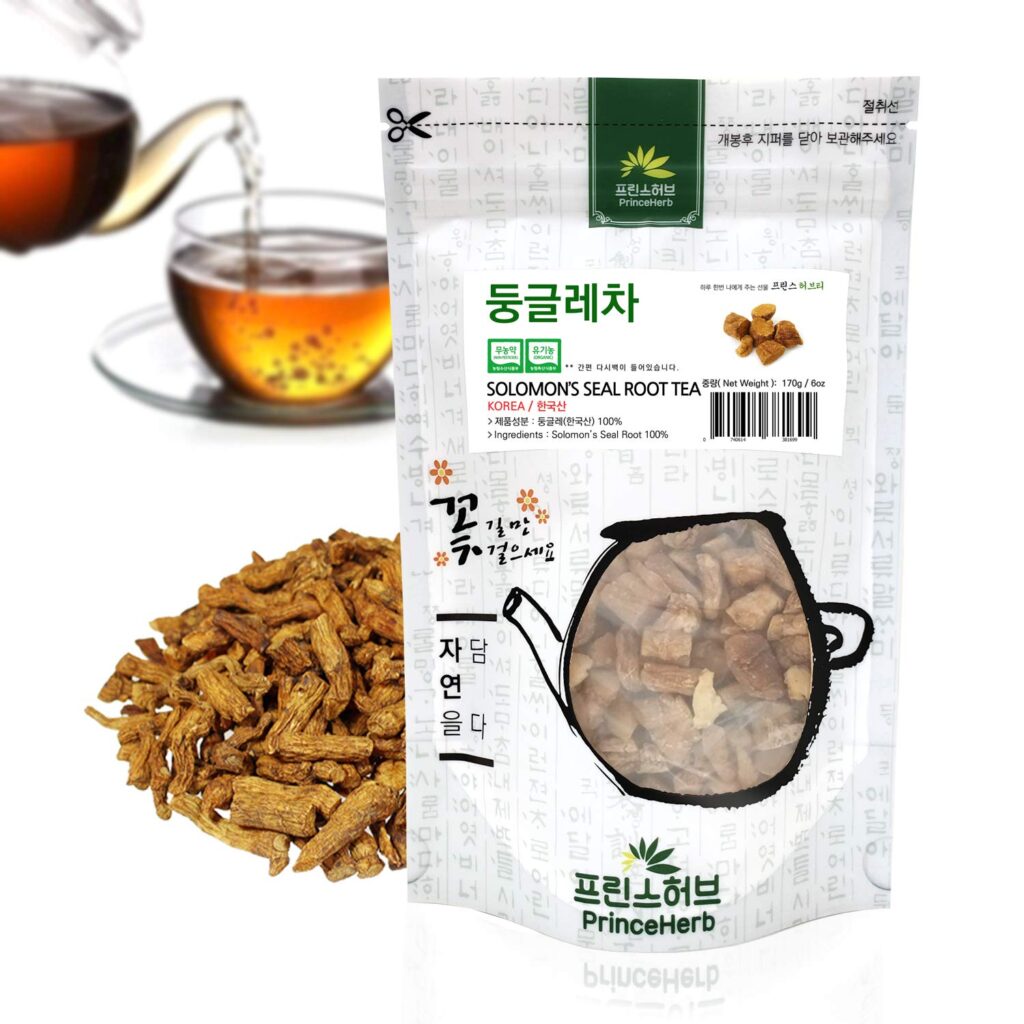
- HOW IT’S MADE – When Solomon’s seal root matures in the fall, farmers collect it, cut it into smaller pieces, and dry it thoroughly in the sun. Solomon’s seal roots can be purchased as chunks, as shown in the image above, but they are more commonly found ground up in tea bags. I’ve discovered that cooking the root chunks produces a much deeper flavor.
- HOW TO ENJOY – If you’re lucky enough to receive the root pieces, add 1.5 – 2 oz of the root in 5 cups of water. Bring to a boil and let it simmer for an additional 20-30 minutes. Because it’s so mild, you can steep it for a long time! If it’s a tea bag, simply steep it in boiling water for 1-2 minutes before drinking.
- CAFFEINE – ZERO.
- TASTE – The tea has a mellow, earthy flavor that is evocative of rice tea. I appreciate drinking this tea on its own.
- HEALTH BENEFITS – In ancient Korean history, the Goguryeo Kingdom reaped the benefits of this tea. It is a traditional cure for dry coughs and a good source of vitamin A.
To Conclude
I hope you enjoyed reading about the various everyday Korean teas! I will soon publish another post with more Exotic Korean Teas!
Have a nice cup of tea!
